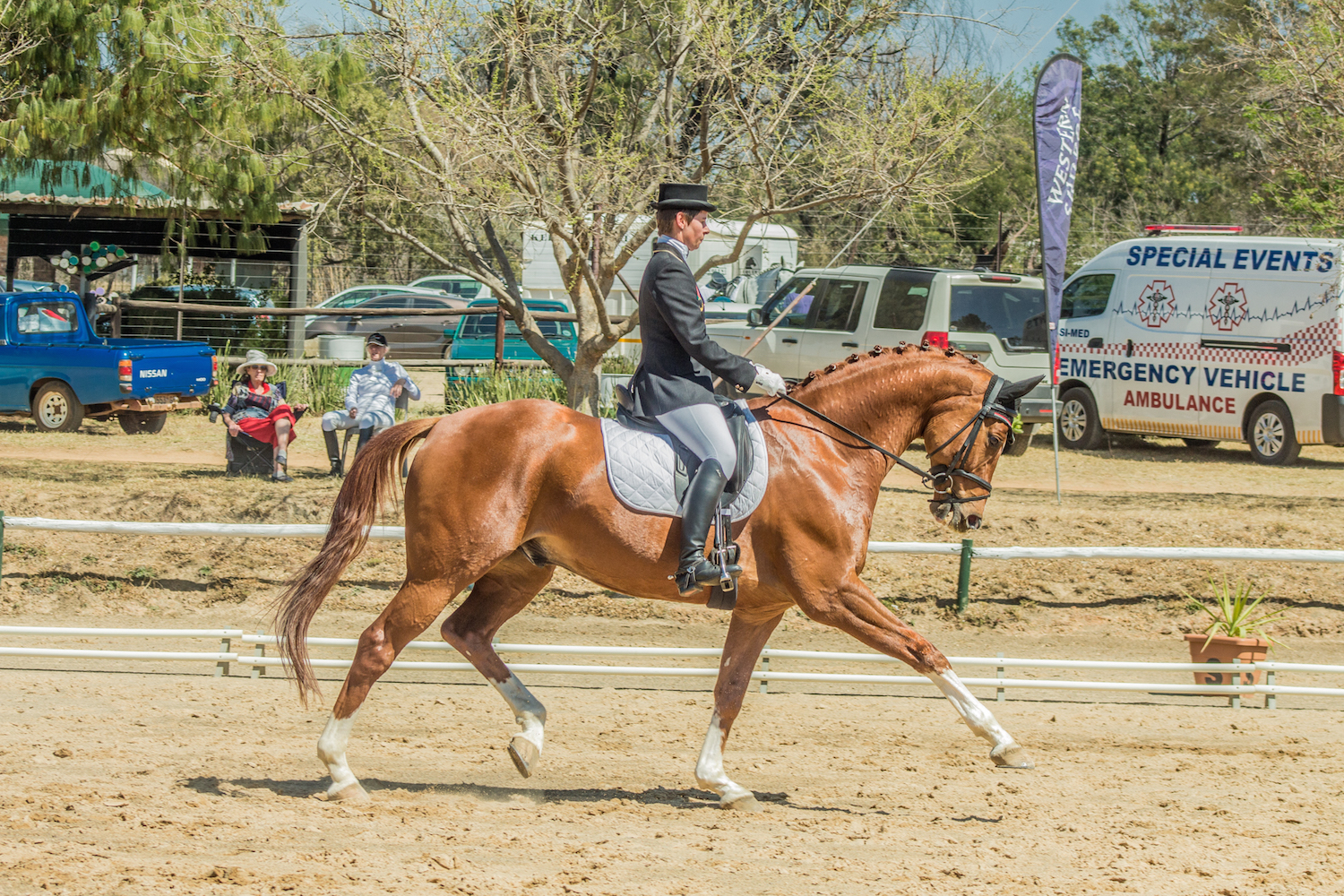You’ve reached Medium! Let the games begin … ~ Brigitte Billings
There are some riders who believe that real dressage doesn’t begin until you reach Medium. Obviously this is up for debate, much like the showjumping adage that a horse isn’t jumping until he faces a metre obstacle. Anyone who’s ever cantered up to a 90cm jump will admit that it’s not for sissies. Likewise, you’ll have found yourself challenged both mentally and physically by many of the tests you’ve ridden till now.
The difference with dressage is that although this series of articles has provided a ‘fast-forward’ through the grades, in real terms, your journey to Medium may take you five years. During this time you will certainly have been doing dressage – particularly if you’ve been serious about helping your horse reach this point.
The tough stuff
The hard fact of dressage is that not every horse will make it to Medium or beyond. One of the greatest frustrations many riders face is the realisation that they’ve hit a brick wall along the way. It may be a freak accident, a conformational challenge or simply understanding that the pressure is too much for their horse to happily work with. Some of these ‘walls’ are temporary – waiting for an injury to heal, or working at a pace that accommodates your horse’s body or mind. In some instances, this is where the hidden costs of the sport come to play. At the highest levels, riders invest great sums into keeping their horses sound and healthy.
Unfortunately, you may also find yourself facing the certainty that you’ve hit your ceiling as a horse-rider partnership. Most will be happy to continue their riding relationship without pushing for more, but for a rider with a competitive streak, this can be a huge dilemma. If you’re fortunate, you’ll be in a position to buy a new horse and keep your old friend too. However, the costs of keeping horses can be prohibitive. If this is the case, bear in mind that South Africa is sorely lacking in schoolmasters and a well-schooled horse can be an absolute gem for another rider who plans to go through the lower grades. As long as horses are sold with full disclosure of reasons for sale, there is no shame in finding your horse an excellent new home.
Fred and Ginger
By this stage, you and your horse probably know each other as well as old dance partners; you’ll literally be joined at the hip as your seat aids become the mainstay of your communication channels. One of the things you may notice about the Medium tests is that they’re longer than the previous grades – six and a half minutes may not seem like a lot, but when you consider the amount of physical strength required for the movements you’ll be riding, as well as the sheer number of moves in each test, it will become clear that strength and fitness are not negotiable at this stage. Your horse will not only be fit and supple, but will also have ‘pushing’ power to maintain strong steady gaits, and ‘carrying’ power to engage his hindquarters, lift his forehand and move with grace. You’ve reached the point where you have days that you believe you might actually make it to the Olympics … and then there’ll be days that you feel as ineffectual as you did in Prelim. Because this is riding and horses were designed to keep us humble!
The tests
Once again, there are seven Medium tests – 1, 2, 3, 4, 5, 6 with a Freestyle. In addition to your double bridle and spurs, you may have graduated to riding in tails. In the past, top hats were another marker of reaching the higher levels, however with safety awareness on the rise, most opt to keep their hard hats.
While you’ll be riding many of the moves introduced in the previous levels, now judges will be looking for greater accuracy and more extreme angles in the lateral work. There will also be attention to regularity and activity – each gait should be equally expressive, regardless of degree of collection. A collected canter is not simply a slow canter – it should have the same power and activity as an extended canter, simply without covering as much ground. Judges will also expect to see a horse who is correctly positioned and uphill in his movement. Even when riding a downward transition, there should be a sense that the horse gearing down, rather than slamming on brakes or flopping out of the gait. This will definitely become clear to you when you start to ride tests that either begin or end with a collected canter to a halt at X. In fact, canter work becomes pivotal in Medium, with many tests focusing largely on this gait, incorporating 10m circles, half-pass and flying changes. If you’re reading this as a Novice rider, it may be startling to think that there’ll be a time when you can expect your horse to do an entire lesson in canter – but such is the beauty of dressage that with correct training, he will be quite ready for it.
Next month we’ll look at the Advanced classes.
Want to try it out? Recreational membership is free! Visit www.dressagesa.com for contact information.


No comments yet.